Physical Assistance & Transfer

Home > Patient Care and Education > Physical Assistance and Transfer
Four; 4 questions out of the 30 questions in the Patient Care and Education content area come from the Physical Assistance and Transfer sub-topic.
Can we please get your advice on this one question?
- Patient Transfer and Movement
A radiation therapists’ understanding of patient transfer and movement is relevant to patient care. A review of patient transfer and movement touches on body mechanics as well as transfer techniques.
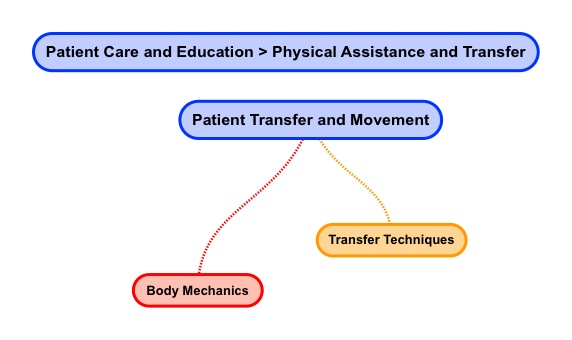
Body mechanics can be defined as the use of one’s body to maintain balance as well as control while producing motions that are safe and efficient. The objective for any movement is transfer safety. The radiation therapist (health care worker) as well as patient must never be compromised; which means, if you are in doubt as to the level of assistance require, get more help.
Here are a few body mechanic tips for your consideration. Always communicate what transfer you are about to perform with the patient and make sure the patient understands their role. https://www.dir.ca.gov/dosh/dosh_publications/backinj.pdf
There are three levels of transfer; namely, independent transfer, assisted transfer, as well as dependent transfer. Independent transfer means that the patient performs all aspects of the movement.
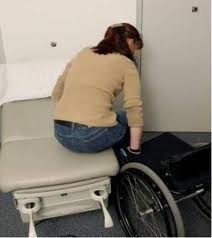
Assisted transfer means that the patient actively participates but still needs assistance with the movement.
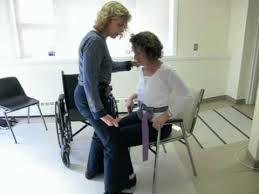
Dependent transfer means that the patient does not participate with health care workers performing all aspects of the transfer.
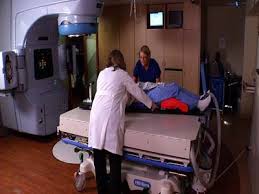
- Assisting Patients with Medical Equipment
A radiation therapist needs to know how of how to assist patients with medical equipment.
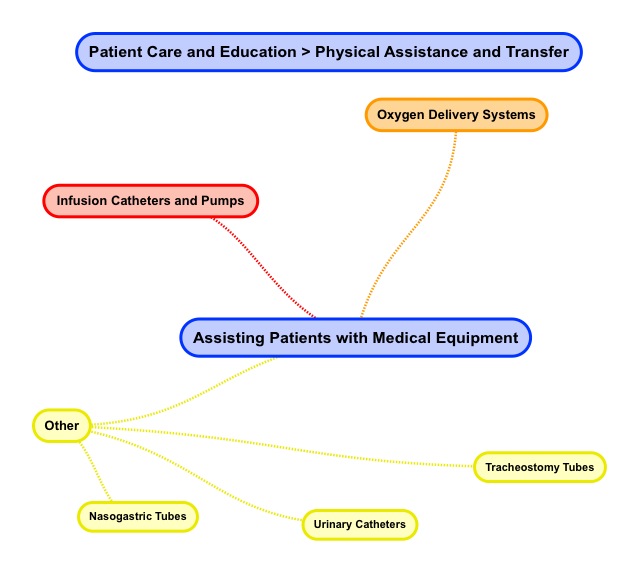
Commonly encountered medical equipment includes infusion catheters & pumps, oxygen delivery systems, nasogastric tubes, urinary catheters, tracheostomy tube, as well as chest tubes. Our review of assisting patients with medical equipment is cursory. Learners are encouraged to conduct a thorough review.
An infusion catheter is a medical device consisting of a thin tube connected to a pump. The thin tube dwells in a body cavity, duct, or vessel. Patients undergoing chemotherapy often have infusion catheters placed to provide reliable intravenous access. Chemotherapy weakens veins so an infusion catheter provides reliable access. Another common example of an infusion catheter is an insulin pump which is used to administer insulin to a diabetic patient. The catheter can be used to give medicines as well as take blood for testing. Exercise care when handling patients with infusion catheters so as not to disturb the catheter or pump.
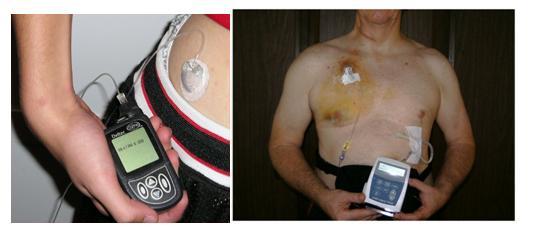
- Oxygen Delivery Systems
There are a variety of oxygen delivery systems. Two common oxygen delivery systems are a standard nasal cannula as well as a venture mask. The standard nasal cannula works by increasing the inspiratory oxygen fraction. An advantage of the nasal cannula is that it does not impede coughing or eating. The venturi mask mixes oxygen with room air. An advantage of the venturi mask is that it works well for mouth breathers. Exercise care to ensure that oxygen lines are not pinched and patients can breathe normally during radiation therapy treatments. Use gloves when handling oxygen lines to prevent infections.
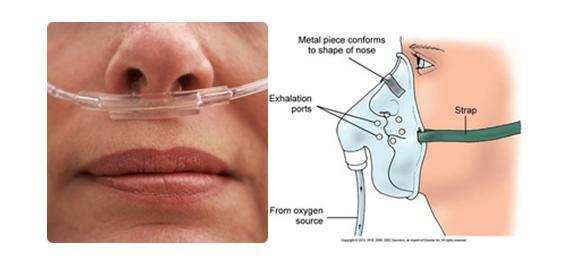
- Nasogastric Tubes
A nasogastric tube or NG tube is a plastic tube inserted through the nose, past the throat, into the stomach. A nasogastric tube is used for feeding as well as the administration of oral medications. A syringe is used for injection as well as aspiration (sucking). A NG tube may be placed in patient who has swallowing or xerostomia issues and is unable to accept food normally. A nasogastic tube can also be used for aspiration of the stomach contents. The aspiration collector bag is placed below the level of the patient’s stomach. Use gloves when handling a nasogastic tube to prevent infection and ensure the tube does not get caught and pulled. An NG tube may also be connected to an injection feeding or medicine pump system or to a suction drainage system.
http://www.nlm.nih.gov/medlineplus/ency/patientinstructions/000182.htm
- Urinary Catheters
A tube is inserted via the urethra into a patient’s bladder. An indwelling catheter is retained by way of a balloon at the tip which is inflated with sterile water. Catheters are commonly used to inject liquids used for diagnosis as well as treatment. In the radiation oncology context for example, a catheter maybe used to inject contrast to better visualize the bladder in proximity to other pelvic anatomy. A catheter is also used for drainage of urine after a TURP (transuretheral resection of the prostate) as well as after has incontinence as well as in cases where a patient is unable to urinate normally. Use gloves when assisting a patient with their urinary catheter and ensure the catheter is stored below the level of the patient’s bladder.
http://www.nlm.nih.gov/medlineplus/ency/article/003981.htm
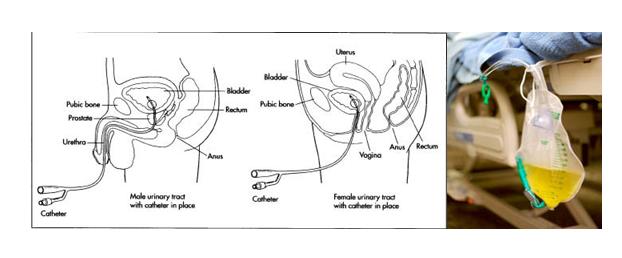
- Tracheostomy Tubes
A tracheostomy tube (breathing tube) is a curved tube inserted into a patient’s trachea by way of a stoma (hole) made into the patient’s neck and trachea. The tracheostomy tube allows oxygen rich air to reach a patient’s lungs besides going thru the nose and mouth. A patient may have a tracheostomy tube placed for a variety of reasons. These reasons include: bypassing the upper airway, removing secretions from the airway, mechanical ventilation, as well as delivering oxygen directly to the patient’s lungs. Use gloves when assisting a patient with their tracheostomy tube and watch for oozing as well as secretions. Take care to ensure the tracheostomy tube does not become disconnected as it may be difficult to reinsert.
http://www.pmda.go.jp/english/service/pdf/safety/No35.pdf
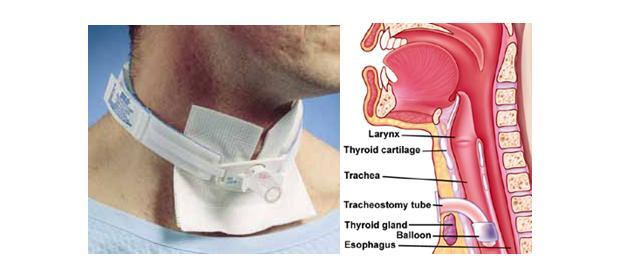
- Chest Tubes
A chest tube is a thoracic catheter inserted via the chest wall through skin and muscle into the pleural space or the mediastinum. A chest tube is used to remove a pneumothorax (an abnormal collection of air or fluid in the space between the chest wall and the lung) allowing the lung to expand. Chest tubes are inserted under local anesthesia and sutured into place. The drainage canister is under negative (sucking) pressure and placed below the level of the patient’s lungs. Kinks, loops, as well as bends in chest tubes may represent an obstruction and should be avoided. Handle chest tubes with gloves & care to ensure tubes do not pull on the insertion side. Watch out for pus / seeping & do not move chest tubes close to the thorax as this may damage more tissue. Drainage canisters need to remain under the level of a patient’s lungs.
http://www.mayoclinic.org/diseases-conditions/pneumothorax/basics/definition/con-20030025
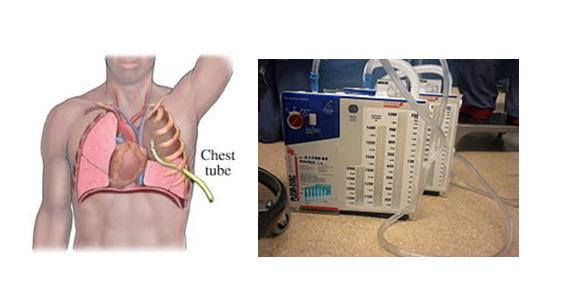
Assisting Patients with Medical Equipment
Home > Patient Care And Education > Physical Assistance and Transfer
- Ethical and Legal Aspects
- Interpersonal Communication
- Patient Assessment and Management
- Treatment Side Effects
- Blood Studies
- Dietary Counseling
- Physical Assistance and Transfer
- Medical Emergencies
- Infection Control
FREE Infographic What successful people believe. What successful people do
Dictionary of Cancer Terms
Need help understanding a word? Here is an electronic resource that gives meaning to Cancer terms and their usage.

StrengthsFinder 2.0